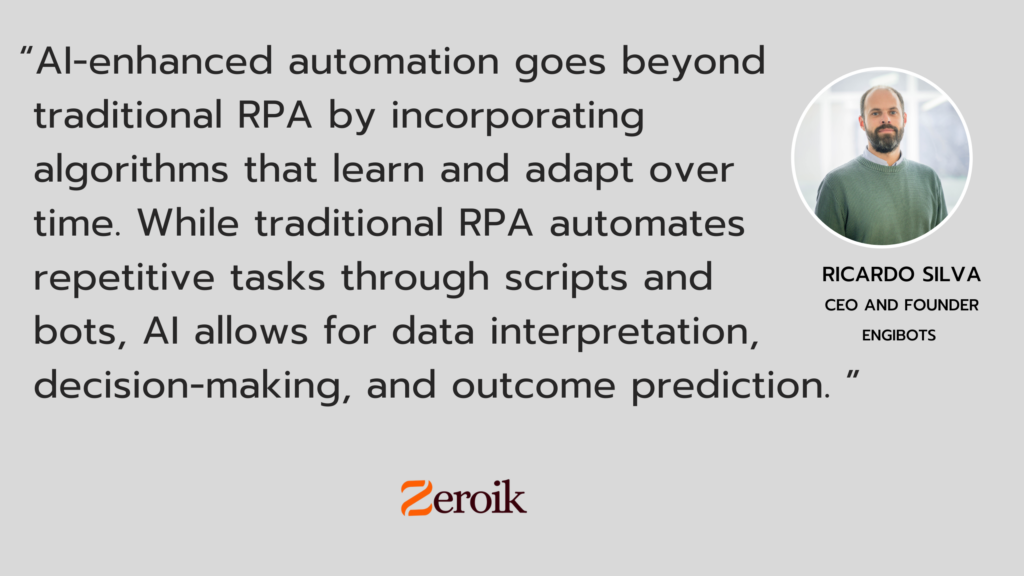Ricardo Silva of Engibots explains how AI-powered automation enhances business efficiency beyond traditional RPA. He highlights the strategic selection of processes for automation using AI technologies like machine learning, NLP, and OCR. The discussion covers scaling automation with platforms like EngiMatrix and seamless integration with enterprise systems. Key business benefits include reduced human error, increased efficiency, and cost savings. Future trends point to deeper AI-RPA integration, predictive analytics, and more intelligent, adaptive automation solutions.
How do you decide which processes should be automated with AI and RPA?
We decide to automate processes that are repetitive, standardized, and prone to human error. We use the Pareto principle (80/20 rule) to identify processes where the majority of data can be processed with minimal human intervention. Additionally, we consider the flexibility of existing systems and the ability to scale with the company’s growth. This approach ensures that we focus on high-impact areas that can significantly benefit from automation.
What AI technologies (like machine learning or NLP) do you use in your automation solutions?
We utilize a variety of AI technologies, including machine learning, large language models (LLMs) like GPT-4, and optical character recognition (OCR). These technologies enable us to analyze large datasets, generate insights, and automate complex tasks such as text generation and document analysis. By leveraging these advanced tools, we can provide more intelligent and efficient automation solutions.

How is AI-enhanced automation different from traditional RPA?
AI-enhanced automation goes beyond traditional RPA by incorporating algorithms that learn and adapt over time. While traditional RPA automates repetitive tasks through scripts and bots, AI allows for data interpretation, decision-making, and outcome prediction. This results in a more intelligent and flexible automation process that can handle a wider range of tasks and adapt to changing conditions.
How do you scale automation as a company grows?
We scale automation through our EngiMatrix platform, which integrates multiple technologies and components for business process automation. The platform is designed to be flexible and scalable, allowing for seamless integration with existing systems and adaptation to the company’s growing needs. Additionally, we use internal methodologies to evaluate, structure, and implement solutions efficiently, ensuring that automation can grow alongside the company.
What business benefits have your AI-RPA solutions delivered?
Our AI-RPA solutions have delivered numerous business benefits, including reduced human errors, increased operational efficiency, and improved data management. Our clients have reported significant productivity gains, time and cost savings, and a substantial competitive advantage. These benefits demonstrate the value of our solutions in enhancing business performance and driving growth.
What future trends in AI and RPA will change business automation?
Future trends include deeper integration of AI with RPA, the use of large language models for more complex tasks, and the adoption of AI technologies for predictive analysis and personalization. These trends will enable more intelligent, adaptable, and user-centric automation, transforming how businesses operate and interact with their customers. By staying ahead of these trends, we can continue to provide cutting-edge solutions that meet the evolving needs of our clients.
How do your AI-RPA solutions integrate with enterprise systems like ERP, CRM, and legacy software?
Our solutions integrate seamlessly with enterprise systems through APIs and other integration technologies. The EngiMatrix platform facilitates structured and secure communication between different systems, ensuring that data is shared and utilized efficiently. This includes integration with ERPs, CRMs, and other legacy systems, enabling the automation of complex processes and centralization of information. By providing a unified platform, we help businesses streamline their operations and improve overall efficiency.






